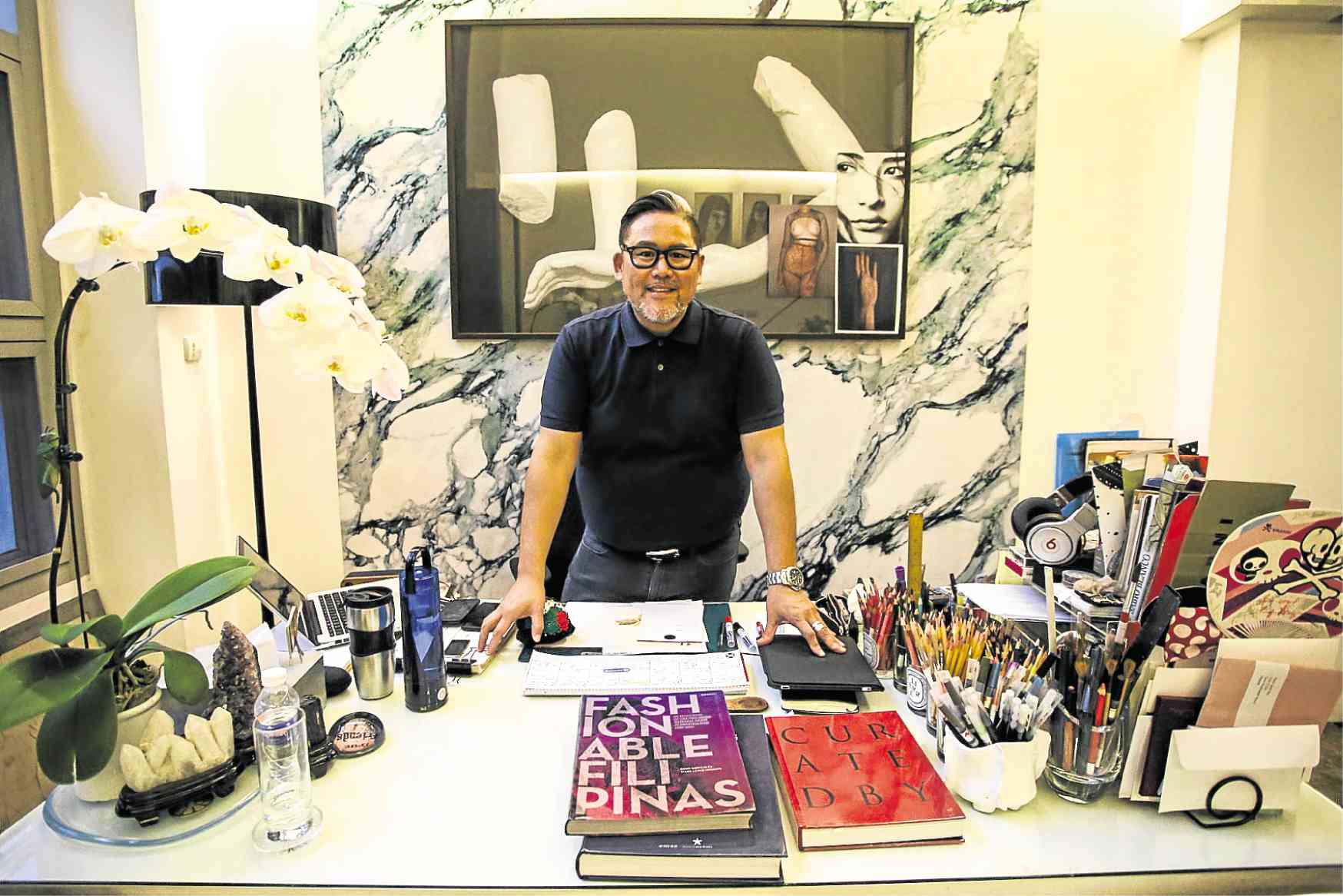
When Rajo Laurel presents his 110-piece collection in the Red Charity Gala Ball on Oct. 27, the audience, unfortunately, may not readily see the big story.
The story in this always much-awaited annual spectacle —the show is as much off the ramp as on it, because the guests simply “out-ball gown” each other—lies beneath the drama that is a fashion show. Since the show usually starts past 11 p.m., after the auction, you hope the audience will keep their eyes wide open for the craft and design of the collection.
(The Red Charity Gala producers Tessa Prieto-Valdes and Kaye Tiñga remain unsurpassed in staging record-breaking benefit auctions.)
The story is how Laurel combines indigenous fibers and modern fabric technology to create his collection. Laurel did his own fabrics for 75 percent of the collection. That should be something to see, if only the audience could scrutinize the clothes on parade.
It seems gone are the days when Filipino designers complain about the scarcity of fabrics, and when they had no choice but to use imported fabrics for 100 percent of their collections.
Laurel is able to experiment with fabrication because this collection is not for mass production.
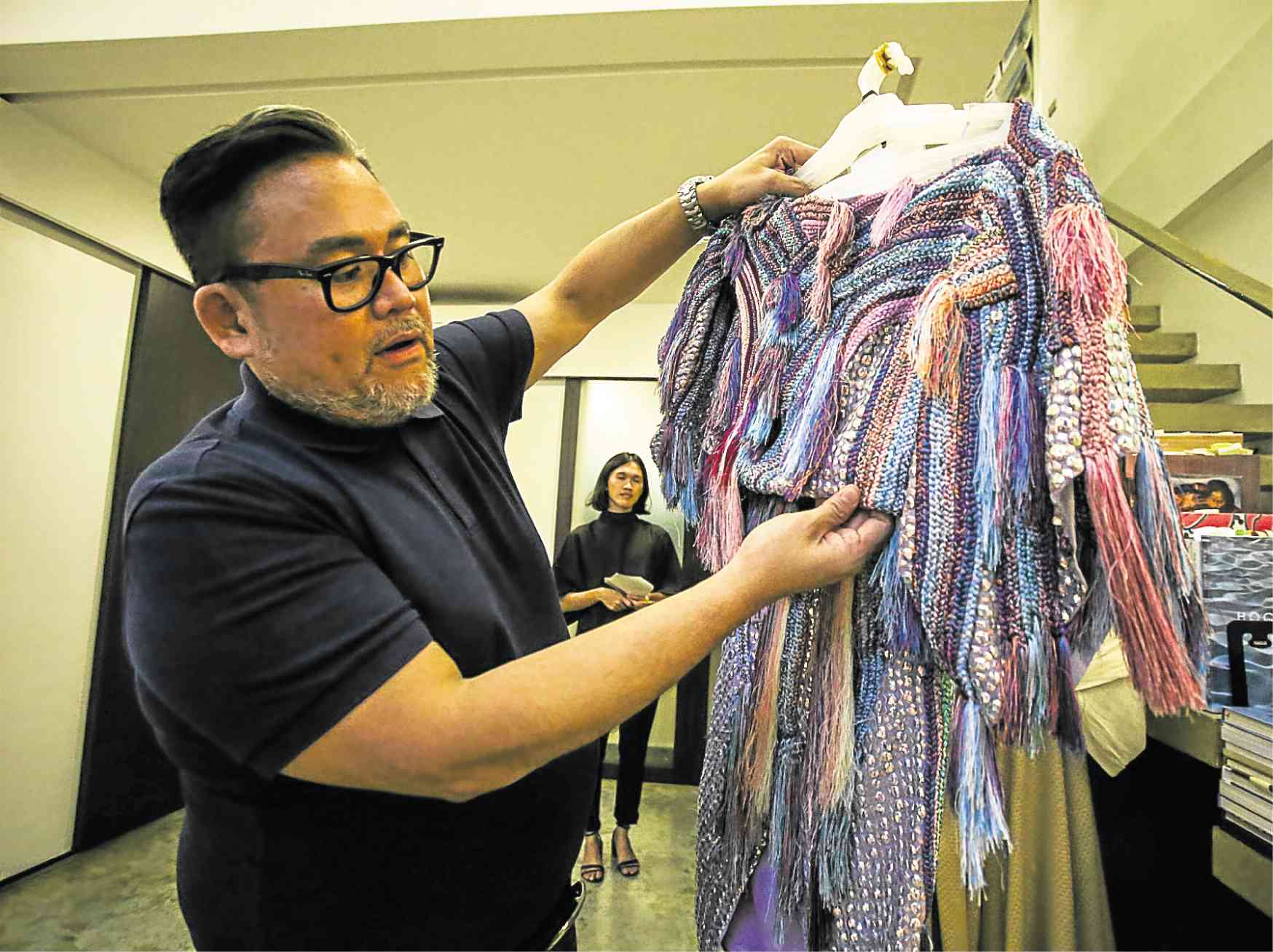
Since early this year, he has been working with the Philippine Textile Research Institute, and with five weaving communities as far as Davao and Abra, to yield textile combinations that lend themselves to cutting-edge designs. They must be wearable.
He produced about five different weaves, on the average, per weaving community.
Before Narda Capuyan’s death in 2016, Laurel went up to Baguio to learn weaving techniques from the pioneer revered in the country for reviving ikat design and bringing it to the world market.
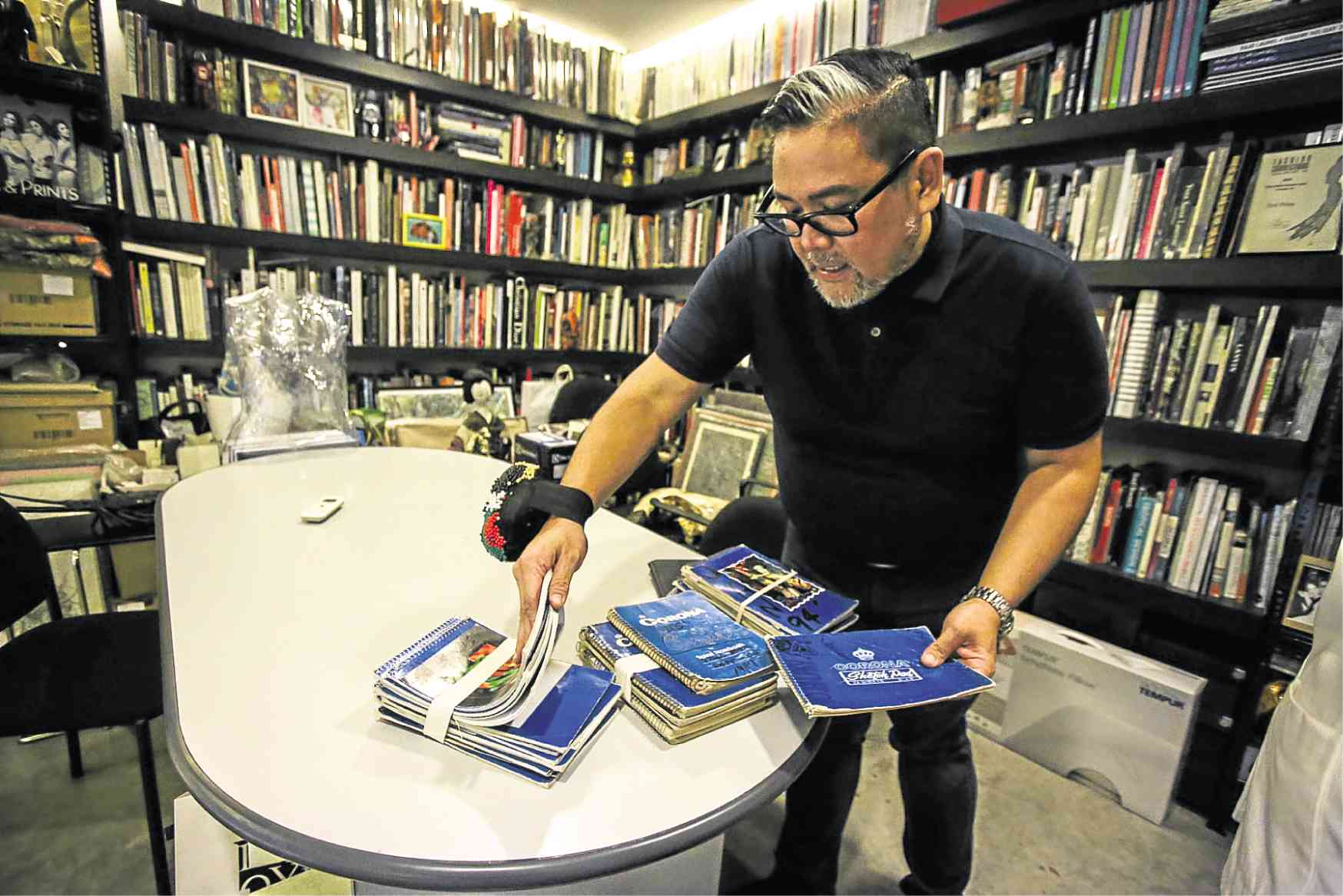
Impressive
One afternoon last week, at the four-story Rajo Laurel showroom/workshop/ factory, we had the
opportunity to look at the woven fabrics and the clothes that Laurel is preparing for the show. They were really impressive: abaca with nylon plastic, cotton, leather, among other raw materials.
He played with different materials, including plastic raffia. He tried abaca with tin, but it didn’t quite work out.
For a shift, he uses the Capuyan technique (dyeing and tying the fabrics), producing tassel-like layers over the fully beaded dress.
Laurel stresses that he’s gone beyond the traditional piña or jusi to explore other indigenous fibers. One sheath uses abaca combined with leather strips. For a minimalist terno, he uses acrylic sprayed with car paint to produce the dull metallic finish of the sleeves.
He uses woven jute to produce wide trousers. In another beautiful, long black sheath, he glued laser-cut graphic work of the ancient native alibata alphabet—a meticulous process yielding a striking result. This is one of our favorites, whose painstaking work will not be appreciated from an audience’s seat.
He uses intricate and stunning beadwork to trace local maps on a long sheath, his choices based on the provinces’ interesting shapes.
Given all this, Laurel’s forthcoming collection will not be like those of Inno Sotto, Pepito Albert, or other Filipino designers. I say this because Laurel has been panned by his detractors for copying—a point which he so coherently addresses in this Q and A.
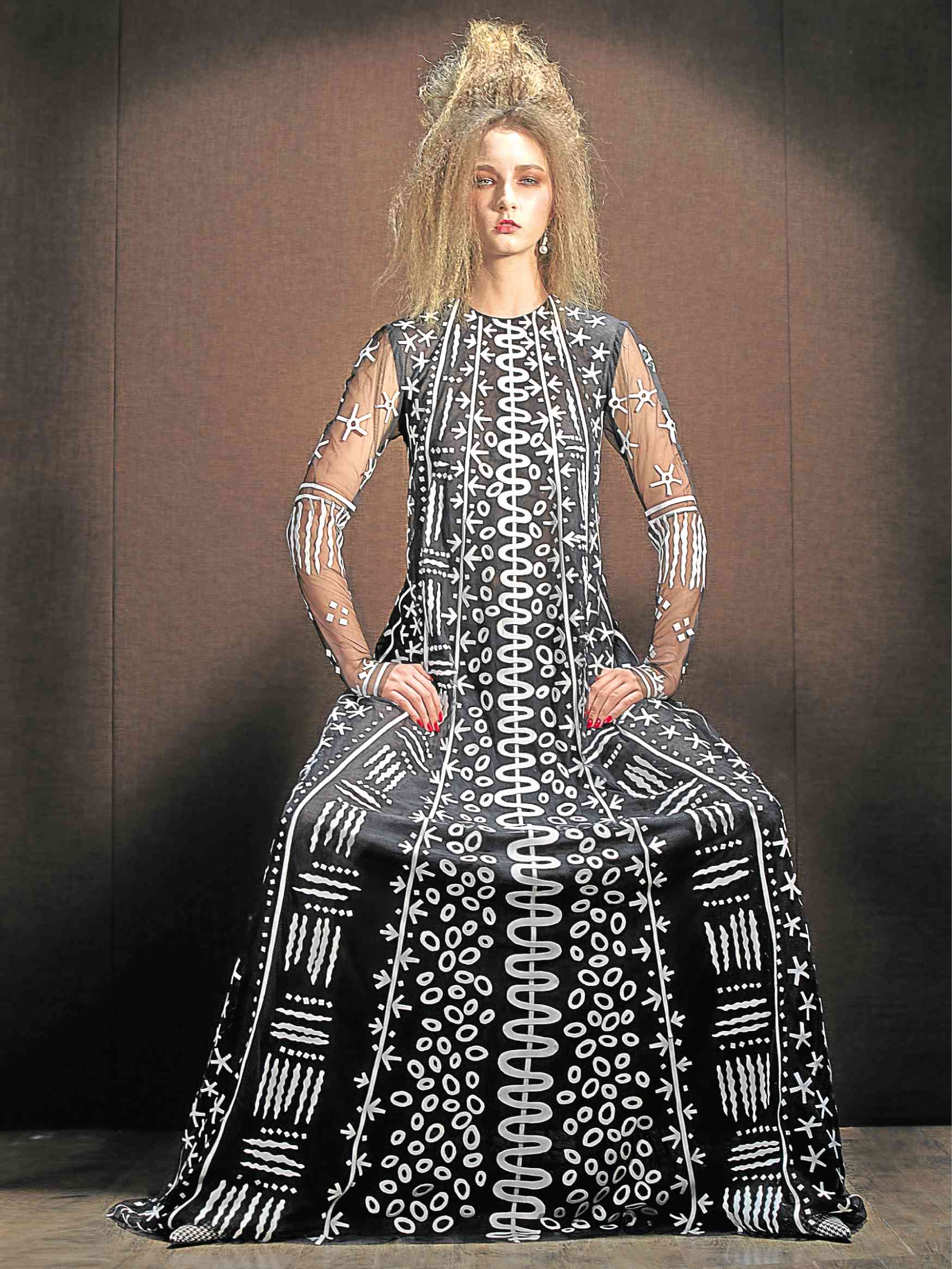
While there are those who can argue about the originality of his designs and concepts, hardly anyone could doubt that Laurel is a very impressive commercial success, who’s gone beyond made-to-order clothes into ready to wear and manufacturing uniforms for corporate and hospitality establishments. There’s also a Rajito children’s line now.
If one doesn’t count Rusty Lopez (who has long retired, since the ’80s), Laurel became the first Filipino designer to become a brand—which went beyond fashion—and continues to thrive. His name is familiar even outside the fashion circle.
His name is a highly marketable brand—from cakes, hamburgers to school supplies. He doesn’t even keep count of the products his name is on. No other Filipino designer could claim that.
Unlike his predecessors in fashion design, Laurel not only has great marketing savvy, but more important, has been able to level up his marketing to the era of social media. Not only does he have his own blog, he also maintains a good following on Instagram and online.
Laurel has a staff of 550—I don’t know of any Filipino fashion designer with such a complement today or in the past. He even has a brand operations manager.
In his showroom that afternoon, we saw a female septuagenarian (perhaps older) client being led by Laurel’s staff out of his office, her business with him apparently done.
And as we left his office, we saw a young socialite waiting for her turn.
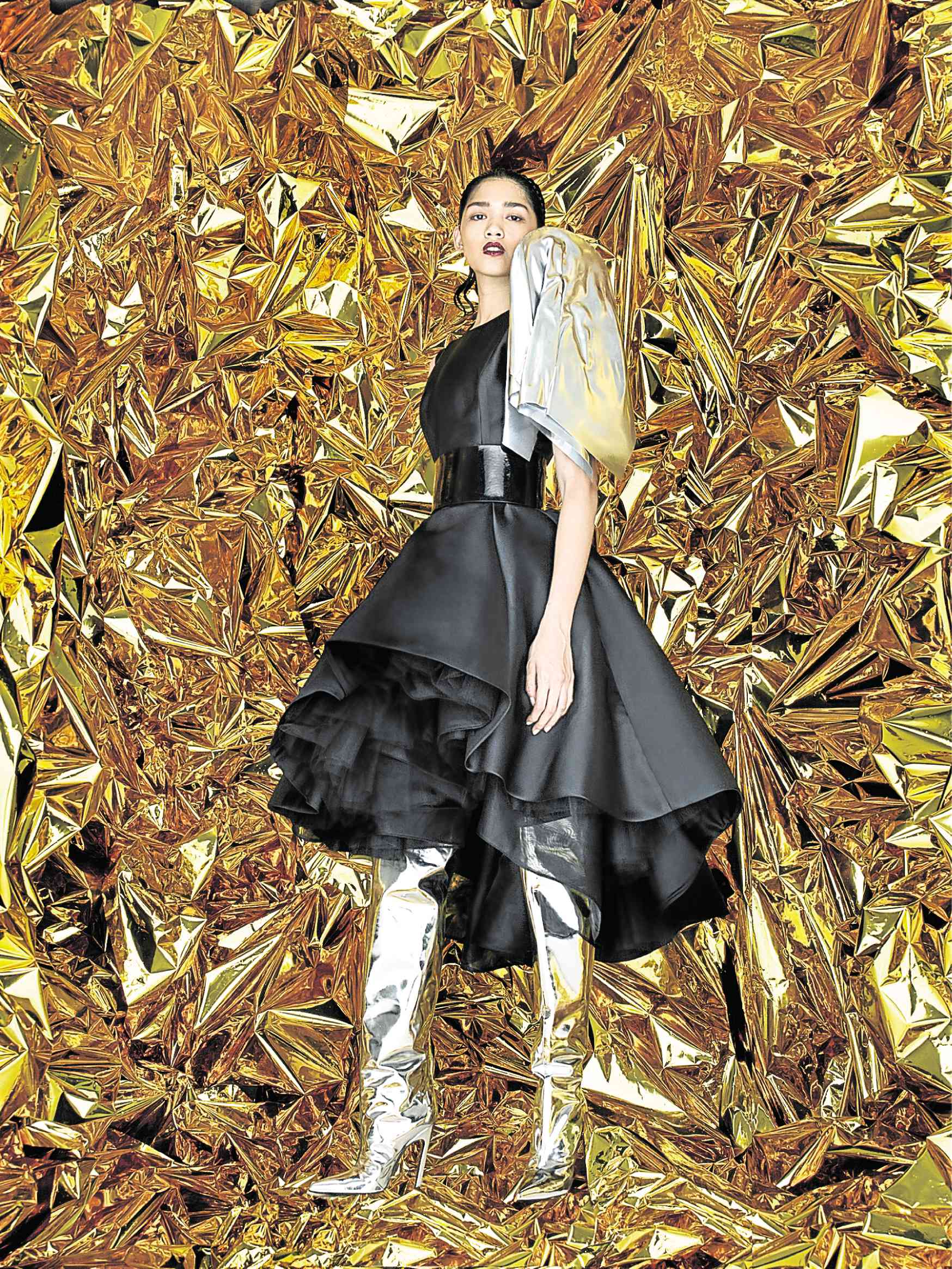
Demographics
In one afternoon, we saw the whole demographics of a Rajo Laurel clientele.
Like an established fashion house, Laurel even has an archives section that includes —believe this—notebooks he had in high school, where he drew sketches of dresses and wedding gowns. He uses these high schooler’s notebooks as reference, to this day.
Leafing through some of them, I observed how his early drawings were so inspired by the romantic, classic and feminine look of the Givenchy, Chanel and YSL of the ’80s.
“See, even then, I was already into trousers,” he said.
His fashion house is a family business, with his mom, Virginia Teves Laurel, as the matriarchal guide. Laurel’s siblings Venisse, Gela and John Laurel help him out in various capacities. His father, Jose C. Laurel V, is the Philippine ambassador to Japan.
The Red Charity Gala show marks Laurel’s 25th year in the fashion industry. But he is not calling it a retrospective—far from it. He doesn’t hark back to his previous output.

On the contrary, it is looking forward. He titles it “Archipelago” because it is inspired by the arts, crafts and culture of the Philippine archipelago.
In making his collection, he uses as reference the coffee-table book of art objects by Federico de Vera, the Filipino-born connoisseur of style and fine art based in New York; the coffee-table book on “Fashionable Filipinas” by Mark Higgins and Gino Gonzales; and “Philippines an Archipelago of Exchange.”
In “Archipelago,” Laurel marries the rich Filipino material (fabrics and crafts) with today’s fashion engineering and technology.
At 46, and after 25 years in the industry, Laurel is, I believe, in a good place. He can rest on his laurels.
But he doesn’t agree.

Our Q and A with him:
How do you describe the 25 years? Your words—because media would have their own way of describing it.
It’s fulfilling. It’s funny because my friends (seeing him prepare for the show) said, “Wow you’re so relaxed!”
But I’m in a place where, if you could compare it to a song, I’m just in an interlude.
Just an interlude?
Primarily because I’m not yet there. I’m not at the climax, where I wanted to see myself at, but I’m about to reach it. Almost like the crescendo of that harmony.
You have not peaked? When you already have become the first brand in Philippine fashion.
I haven’t felt it that way. I still have a lot of boxes to tick.
What are these boxes?
One of the most important things for me is, my goal is for my brand to outlive me. So to do that…
Remember, there are phases in a designer’s life; when a designer is essentially still living, his brand is still there. But the ultimate goal is to be able to transcend. And then the brand becomes an entity itself.
That’s why I’m saying that I’m not yet peaking. Because I want to prepare myself, that it will be a brand that will live beyond me.
How do you think that can be done?
By establishing a sense of code in terms of the design community…
Like at the moment, I have very good assistants who are actually in charge already of certain brand items.
If you break our brand by categories, you have Rajo Laurel, House of Laurel, Rajo, Rajo Man and Rajito. Rajito is the children’s wear.
We have creative “modules” or models and designers under me.
How do you pass on your style to your team?
It’s a conversation. In as much as they learn from me, I learn from them.
Where did you get this thirst for learning? In college?
I took up Human Resource Development, minor in pyschology, at La Salle.
Your parents?
My mom, my dad, my whole family. To be always open to learning….
Even my nephews, nieces, the oldest is 16, they’ve done summer internships here. We’re eyeing our next generation.
What is the design stamp you’re leaving on the industry?
It’s important for me to establish gala shows like these, because it gives me the freedom to experiment, to make mistakes, to test the waters.
It doesn’t happen all the time that we are given that luxury to make a mistake. With clients you cannot. If you make a mistake with a client, either they will never come back, or they’ll get upset with you.
But at least with fashion shows, it’s a way to experiment, to create without parameters. You’re only thinking about yourself. That’s why it’s so joyful to do something like this.
So looking back on the past 25 years, what are the designs you want to be identified with? In your mind, what is the look?
My fashion philosophy or vocabulary has always been about romance and luxury with a tinge of paradox. It’s always like this tug-of-war, between masculinity and femininity. Sort of like seduction versus fetishism.
I’ve always loved this intangible equilibrium—I ask myself: Is it feminine enough? Is it masculine enough? Sexy enough? Or is it sort of like sensuous enough?
This push and pull has always been part of my self-
expression. I also love pushing boundaries for myself. Not just for my team.
We call the collection the “Archipelago” because it is my essay, it is essentially my attempt to define what is Filipino style is now. It’s a thesis on who we are Filipino .
The past 25 years, what are your three key looks?
Wonderful question. The first is sort of like the trousers for evening. I’ve kept all my sketches since I was grade 7. So I have a history of this particular evolution.
Another of my favorite series is my predilection for insects—my insect dresses, black widow dresses, web dresses…
The pants were in the ’90s, the insects in the 2000s.
Which is interesting why, as I age, the problems and tensions and sort of hard times, are always the ones you will remember the most.
In fact, I appreciate you being here because you were one of the first journalists who wrote, I remember the title, “The Changing of the Guard”…
The third one is current. It’s not really just about the styling, it’s the particular paradox of the yin and yang…
I don’t know if you remember Bea Alonzo’s Black Swan dress. You will see some snippets of these.
What do you say to—not that you have been discouraged by criticisms, I think that is one strength you have— what your detractors say that you copy Inno Sotto, looking back?
I accept criticism, in fact I encourage it. Because being criticized is a good thing.
You can’t help it, eh. Inno was such a strong, amazing Philippine design force. So even if I say that I wasn’t inspired or I didn’t want to copy him, you can’t help it because this is what the people around you wanted. Remember we can only exist in what clients tell us to do.
Inno is not only an icon, but also a pillar of fashion, a foundation of good taste.
So when those things were being said about you…?
I didn’t mind because a lot of it was true. How can you sort of not do it when the client says, “Uy, gayahin mo to.” Eh siyempre as a designer, in those formative years… remember the only way one can learn is by going through the motion of what clients see and what they understand.
Inno was a very large, important influence in many careers, especially in the world of fashion, and I respect him. Because he was the person who we all look up to.
Is it also that kind of attitude that makes you go beyond comments such as those of Fashion Pulis that exposed the “Rajo Copy”?
You know, I’ve learned to rise above it. Honestly, if I listened to every person who said negative things about me or my brand, I wouldn’t be able to push forward. It doesn’t mean that I am not affected. There are two ways of looking at this. Either I will get affected and make it bother me so much. Or just shrug it off.
You must have really strong support from your family.
Yes… Obviously we are all capable of making mistakes. Either you move forward, or you essentially disappear.
How do you create? The process?
Usually I begin with a narrative. I tell myself what story I like. For instance, for the holiday collection, I was inspired by the disco era. So I begin with the story, and I imagine how the story of the disco era goes.










































